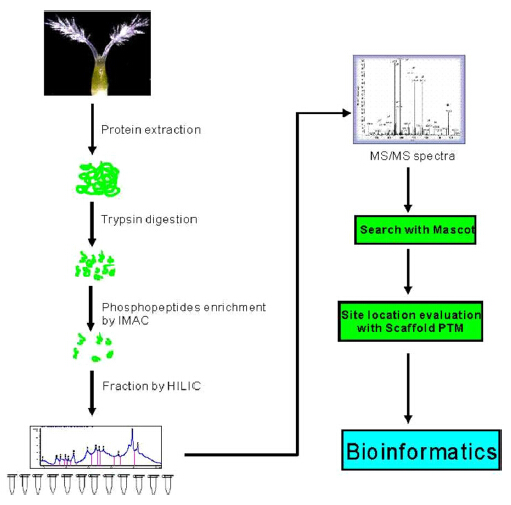Researchers Explore Phosphoproteomic Profile in Rice Pistil
2014-10-08
Rice is the staple food for the world population,which needs pollination for seed production. As the female reproductive part of a flower, the pistil is a critical organ for the process from pollen recognition to fertilization and seed formation. It is biologically and agriculturally important to clarify the molecular mechanisms of pollination in rice.
Protein phosphorylation is one of the most widespread and major PTMs in the organism, modulated by a series of kinase and phosphatases. It is reported that pistils lost receptivity to pollination when they were treated with phosphatase inhibitors. Since then, more and more evidences showed that PTMs, especially phosphorylation and dephosphorylation, might be one of the most important signal modulating manners during pollen and pistil interaction.
Associate Prof. WANG Kun, supervised by Prof. YANG Pingfang from Wuhan Botanical Garden, made a phosphoproteomic analysis of mature rice pistil. With the application of IMAC enrichment, hydrophilic interaction chromatography fraction and high-accuracy MS instrument, 2347 phosphorylation sites with high-confidence (Ascore ≥19, p ≤ 0.01) , corresponding to 1588 phosphoproteins were identified.
A total of 1369 phosphorylated sites from 654 phosphoproteins were newly identified; 41 serine phosphorylation motifs could be divided into three classes after analysis by motif-X: proline-directed, basophilic, and acidic motifs. Phosphopeptides of 201 genes were identified showed tissue-specific expression in pistil based on information mining of previous microarray data. The MS data have been deposited to the ProteomeXchange with identifier PXD000923.
The first qualitative phosphoproteomic analysis of rice pistil will not only add important phosphorylation information on rice proteins, but also improve the understanding of the pistil development and pollination on the posttranslational level.
Study entitled “Analysis of phosphoproteome in rice pistil” was published in Proteomics.

Schematic flowchart of the experiments (Image by WANG Kun)